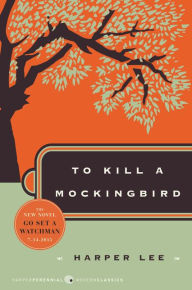 Harper Lee only published one book in her lifetime, the well-known and well-loved To Kill a Mockingbird. It was a story rooted deeply in the attitudes of the 1930s south, taking on racism, classism, how people who are good at heart can do bad things, and how frightening outsiders can do good, even when they have no reason to.
Harper Lee only published one book in her lifetime, the well-known and well-loved To Kill a Mockingbird. It was a story rooted deeply in the attitudes of the 1930s south, taking on racism, classism, how people who are good at heart can do bad things, and how frightening outsiders can do good, even when they have no reason to.
There are dozens of other themes and nuances in the book. That is why it is often taught in high schools and colleges around the country, and used in book clubs and One Book, One Community programs over and over.
Even after the success of her book, Ms. Lee shunned the spotlight, even as her life-long friend Truman Capote (In Cold Blood, Breakfast at Tiffany’s) seemed to crave it, spending his time living fast and large in the literary circles of his age. After the publication of her only novel, Harper Lee assured the world over and over that this was the only book she had within her, and that nothing else would be forthcoming.
Ms. Lee is in her 90s now. It’s said that she is hard of hearing and sight and the sharp wit that kept even the likes of Truman Capote on his toes is long gone. That is no sin; time and age come for us all. For many years, her sister had been her lawyer and executor of her estate. Her sister protected her interests, including her feelings and preferences toward her written works. Then her lawyer, confidant and protector passed away, leading to some interesting developments.
 Rather suddenly, a “new” book by Harper Lee was announced. Technically, it was a lost manuscript written by Ms. Lee in the 1950s. Publishers and agents declared that Ms. Lee was delighted to see the release of Go Set a Watchman, which was being billed as a sequel to the classic To Kill a Mockingbird. And it does very much sound like a sequel. Scout, the child protagonist in To Kill a Mockingbird late from New York, returns to her hometown of Maycomb, Alabama and reconnects with lost friends and family, and attempts to reconcile the racism in her family and community.
Rather suddenly, a “new” book by Harper Lee was announced. Technically, it was a lost manuscript written by Ms. Lee in the 1950s. Publishers and agents declared that Ms. Lee was delighted to see the release of Go Set a Watchman, which was being billed as a sequel to the classic To Kill a Mockingbird. And it does very much sound like a sequel. Scout, the child protagonist in To Kill a Mockingbird late from New York, returns to her hometown of Maycomb, Alabama and reconnects with lost friends and family, and attempts to reconcile the racism in her family and community.
The book, however, was written before To Kill a Mockingbird. In fact, Harper Lee worked with publishers on repeated drafts, trying to craft the disconnected look at racism and small town life into a solid narrative. Then, at some point, Go Set a Watchman evolved into the story of Scout as a young girl, living with her single father, a lawyer with a kind heart for his poor and disenfranchised neighbors.
This version of Scout’s story was published to great fanfair. It became the beloved classic that we all know the name of, and can readily recall the orchid color cover with just the slightest memory jog.
So why Go Set a Watchman?
Is Harper Lee really excited about the release of this long-lost manuscript? Is she being taken advantage of in her old age? We may never know.
But it isn’t fair to judge a book by its cover, and it may not be fair to judge a book by its provenance. My suggestion is that we all give it a read, and make up our own minds. Was this book publishable in the 1950s? Did it miss its market then, only to find it now, in a future wildly different than that of seventy years ago?
Now comes the part where I suggest you give it a read. Check it out of the library, then tell us what you think. Even as One Book, One Community is meant to stir up discussion in the community, I think Go Set a Watchman can do just the same for us. Not only about the content of the book itself, but the surrounding mythos and scandal surrounding the book’s publication.
Go Set a Watchman is available at Liberal Memorial Library now. Please check it out, and tell us how you feel!

Leave a Reply